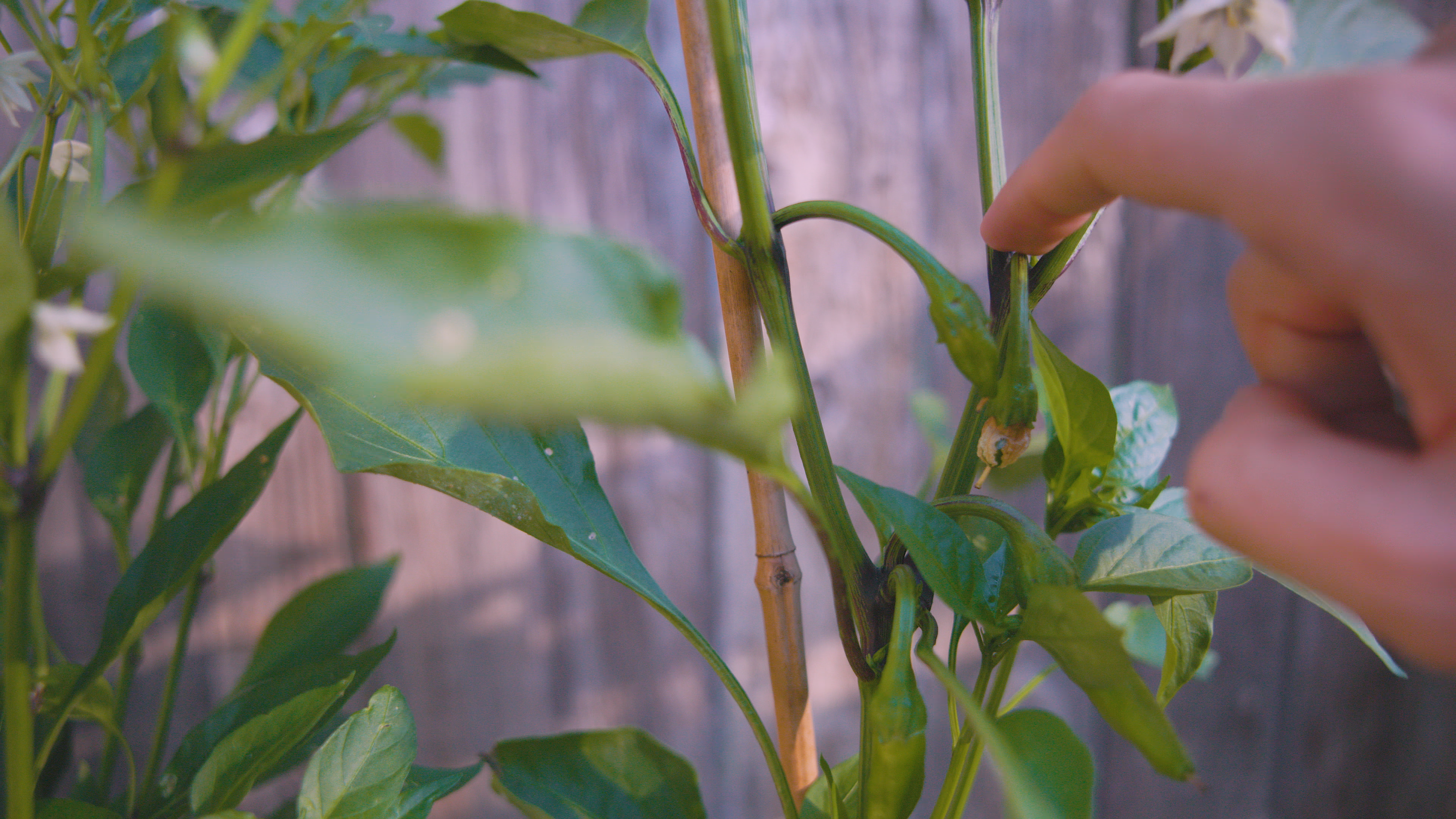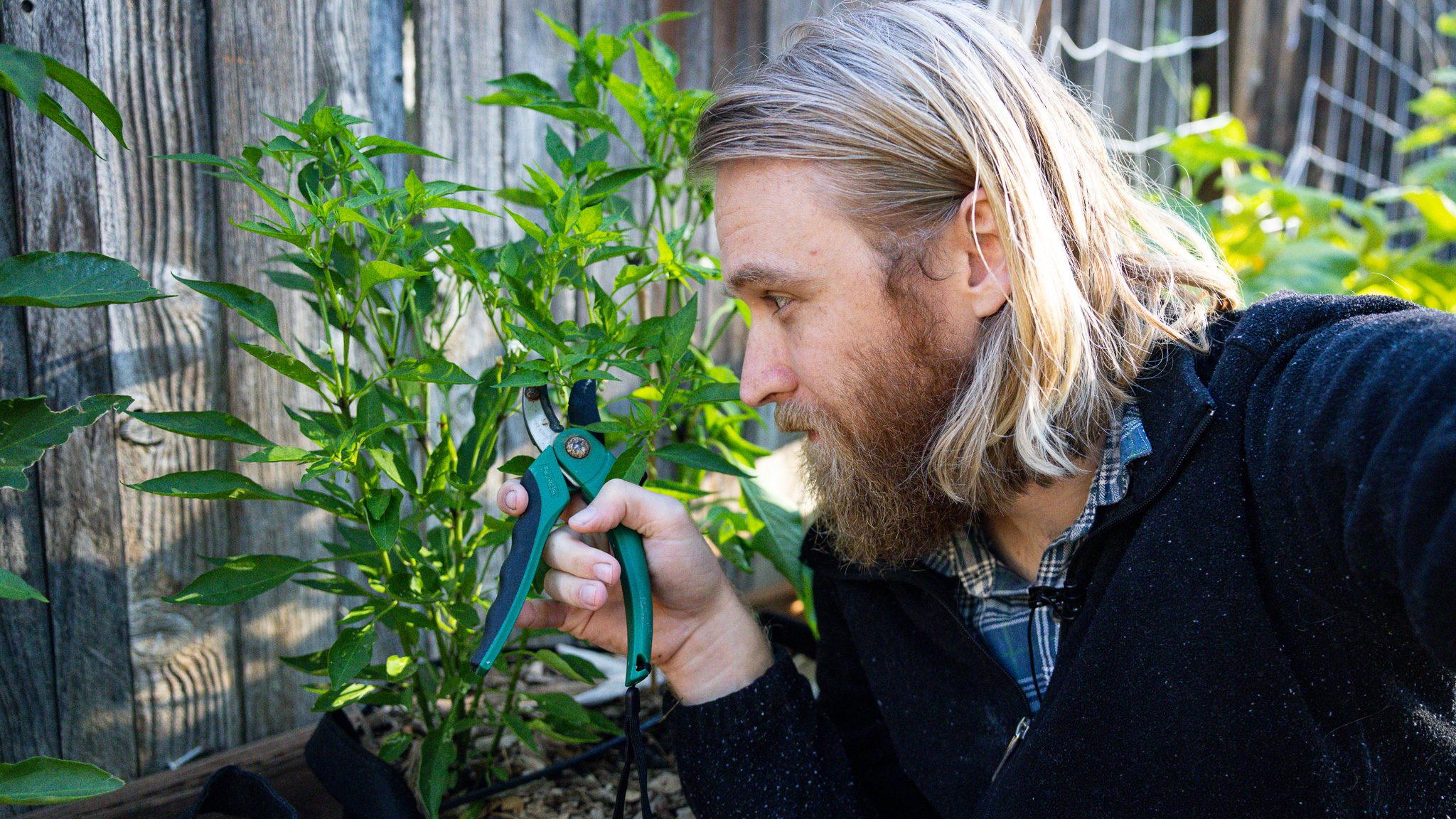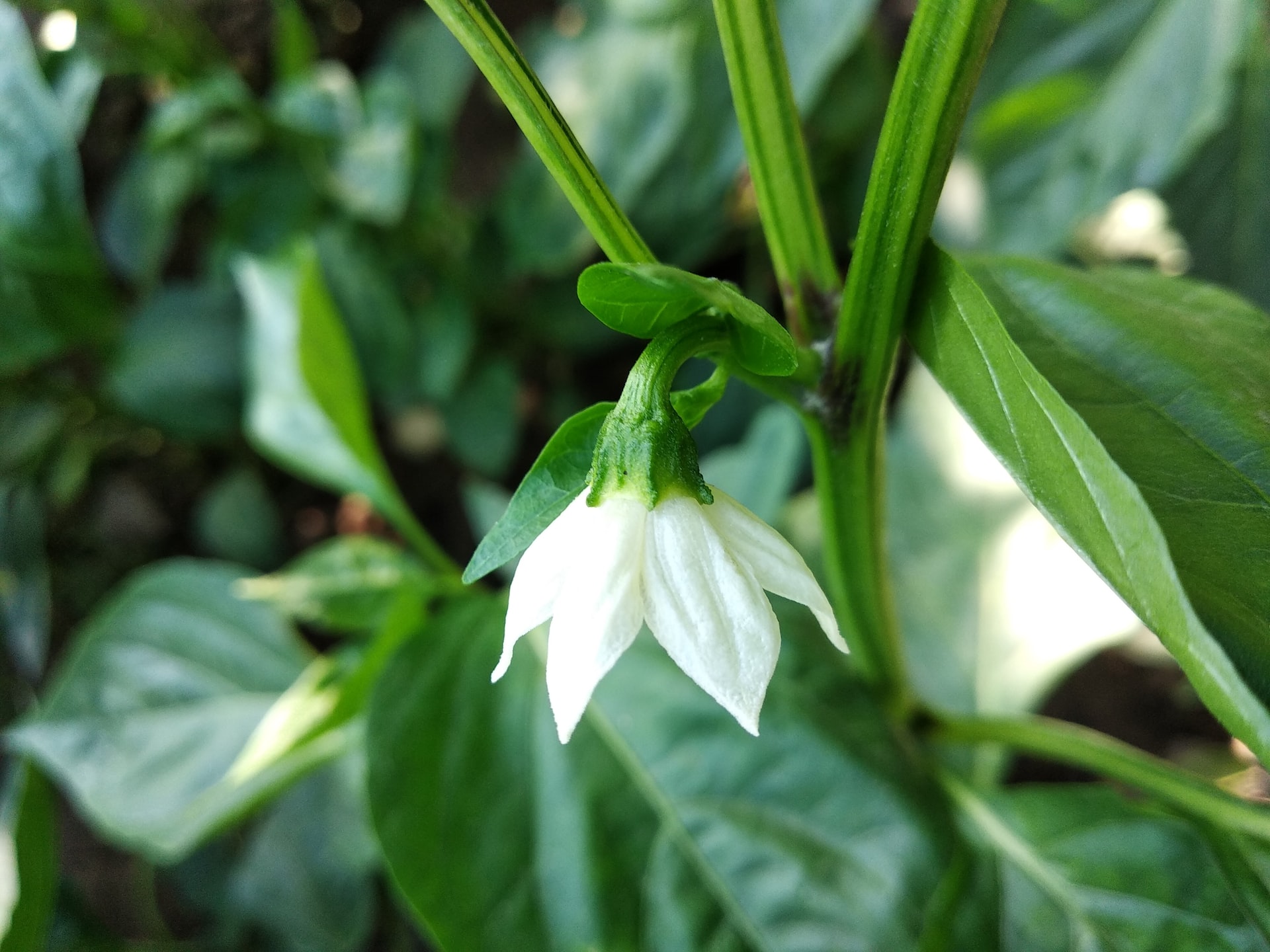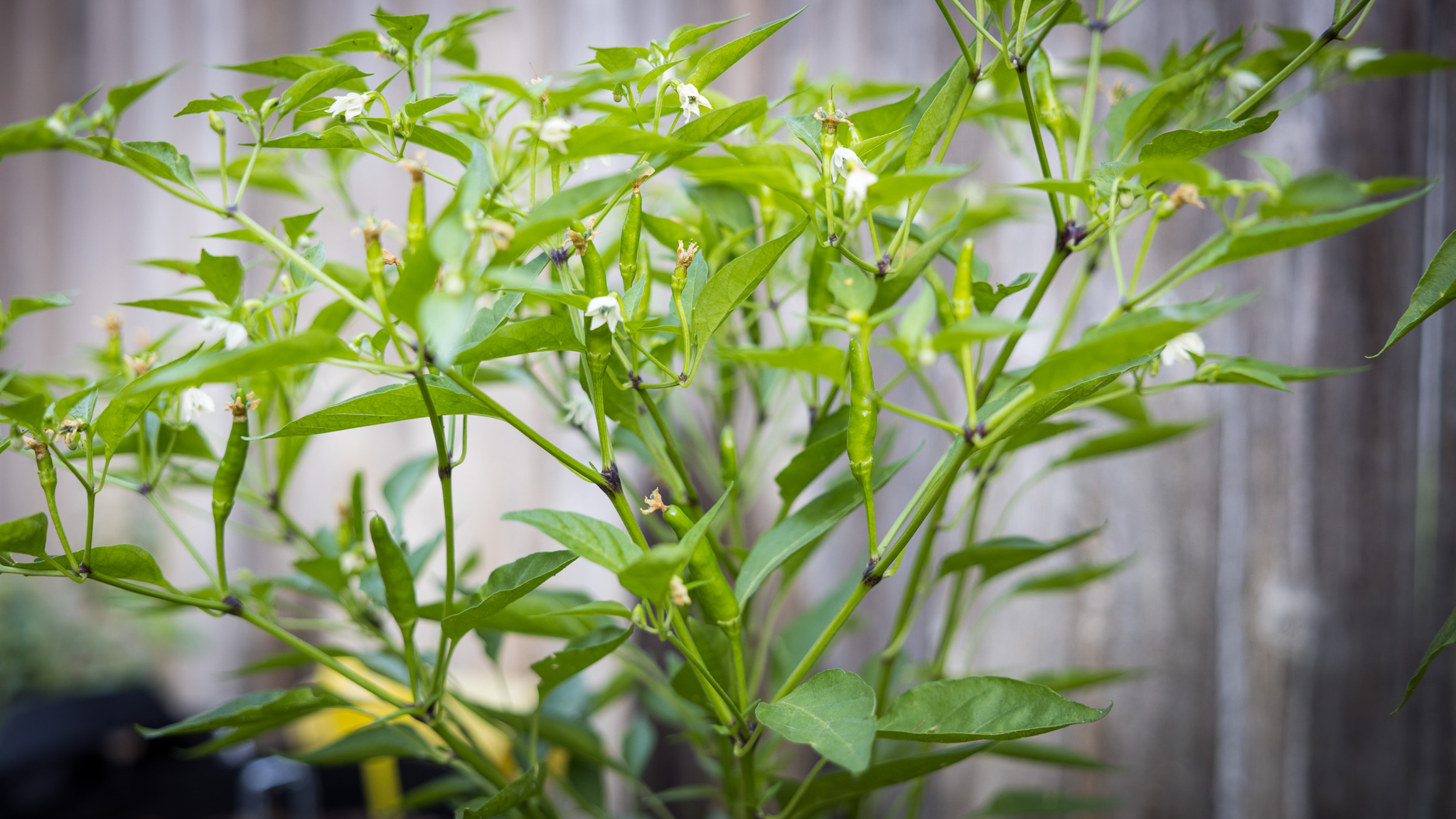To get right to the point, the truth is you probably don’t need to prune your pepper plants… at least not in the way commonly suggested.
But there’s a little more to the story, so let’s take a closer look to understand why not pruning is the way to go most of the time and a few exceptions to that rule.
Pepper Plant Structure
 As you can see in the image above, pepper plants have a really clear main stem as well as lots of peripheral stems growing out of the leaf nodes. Sweet peppers like Jimmy Nardellos and hot peppers like Super Thai peppers have very different growth habits, but that basic structure is the same. And it’s probably familiar to you if you’ve grown other nightshades like tomatoes and eggplants.
As you can see in the image above, pepper plants have a really clear main stem as well as lots of peripheral stems growing out of the leaf nodes. Sweet peppers like Jimmy Nardellos and hot peppers like Super Thai peppers have very different growth habits, but that basic structure is the same. And it’s probably familiar to you if you’ve grown other nightshades like tomatoes and eggplants.
Traditional Pepper Pruning
But unlike tomatoes and eggplants, most pepper pruning advice focuses on topping, which is not a term specific to peppers; it just means cutting the main stem to create a top to the plant. Topping effectively encourages the plant to grow out those peripheral stems to replace the lost growth potential in the main stem.
Practically speaking, topping a pepper is going to result in a shorter and bushier plant. Some gardeners prefer that kind of growth as a shorter plant is less vulnerable to wind damage.
But it probably is not true that topping results in more peppers!
By the way, if you prefer to watch a video on this topic, check out our YouTube video on pepper pruning:
Why We Don’t Top Our Pepper Plants
Unlike eggplant pruning, we do not have lots of studies to show that pruning peppers produces more and/or better fruit. There’s just minimal evidence that peppers benefit from the traditional style of pruning, especially when it comes to yield or production. And frankly some of the research suggests that pruning will actually lower your overall pepper yield, especially if you have a normal length or long growing season.
And when faced with a labor intensive task like pruning, it’s better to skip it without a very good reason.
So instead what we can do is skip the topping and support our peppers early on to give them strength in the face of the wind. You’re probably going to stake your plants anyways so it’s just a matter of doing so earlier, before they get tall enough to snap in the wind.
There’s one more reason I actively advise against topping: I like to fit the maximum number of plants in my space as possible. It’s one of the biggest reasons we prune our tomatoes and cucumbers, except with those plants the peripheral stems or suckers are removed so that only the main stem remains and results in a tall, skinny plant that can be packed in tight for much bigger harvests.
But traditional pepper pruning has the opposite effect, resulting in shorter, bushier plants that are less space efficient. Not a big deal in my container garden, but definitely not good in my main garden where I try to pack everything together as much as I can get away with.
When SHOULD You Prune Your Pepper Plants?
 I secretly kind of like pruning, it makes me feel like I’m actually helping things along and not just watching the plants do their thing. So let’s look at a few cases where pruning your peppers is beneficial.
I secretly kind of like pruning, it makes me feel like I’m actually helping things along and not just watching the plants do their thing. So let’s look at a few cases where pruning your peppers is beneficial.
1. Pruning peripheral branches for easier harvests
Peppers can be grown very densely, at about 12 inches apart to maximize yield. But depending on the variety, you may find that spacing creates too much overlap between the plants and a tangled mess of leaves, in which case you can prune off some of these peripheral stems to create a slightly less bushy plant.
That also has the benefit of being much easier to manage and harvest, although I honestly only do it when absolutely necessary.
2. Pruning early flowers for root establishment

First off, just like with all our other nightshades, it’s a good idea to prune off any flowers that appear early on before the plant is in its final home and has had a chance to establish its roots. So generally that means pruning off any flowers that show up when the plants are still inside on my seedling rack and any that show up in the first few weeks after transplanting outside.
Peppers and eggplants in particular are very sensitive in those first few weeks, so I like to try and give them every advantage to start, no matter how small.
3. Pruning for health
Over a long growing season, particularly in very hot dry climates like mine, some of the older lower leaves are inevitably going to become damaged and fried. And that damage can be a good way to introduce diseases. So when I start to see lower leaves become visibly yellowed and crinkled, I’ll go ahead and snip them off.
4. Pruning for early yield in colder climates
I mentioned a few times that topping probably doesn’t result in more peppers, but there’s a bit of a caveat to that. It may help increase early yields. So if you live in a northern climate with a very short season, pruning could be a good thing to experiment with.
5. Pruning for aesthetics

Many pepper varieties such as Super Thai peppers are considered ornamental by some gardeners. Like me! They’re just beautiful and you can elect to enhance that beauty by shaping the plant into a nice bush, just like we would with other perennial ornamental bushes.
And that’s all I have to share on the topic of pepper pruning! I really hope these tips prove helpful as you grow your own beautiful, productive pepper plants.
